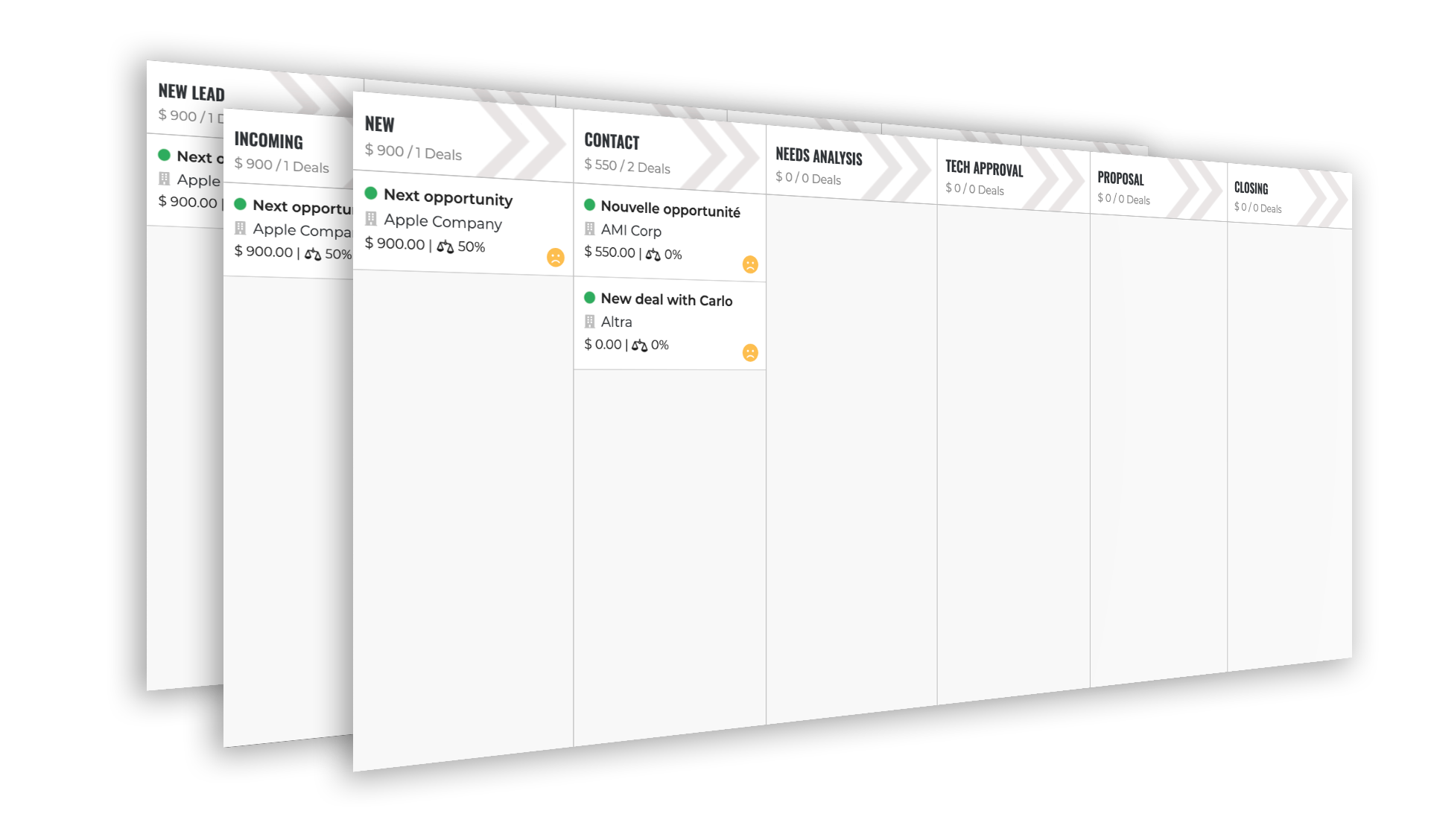In a highly competitive world, staying ahead of the curve is not just an advantage; it’s a necessity. The key to achieving all of this lies in comprehensive sales reports.
Understanding Sales Reports
Imagine sales reports as a treasure map for businesses. These reports are like your trusted guide, leading you through the dense forest of sales data, showing you the way to hidden riches.
So, what exactly are sales reports? Well, they are like your “X marks the spot” on the treasure map. Sales reports are documents filled with valuable information about your sales activities. They reveal crucial details about who your customers are, what they buy, when they buy, and how much they spend.
Think of it this way: sales reports are like a magnifying glass that helps you examine your sales performance up close. They’re your backstage pass to understanding what’s working well and what needs improvement in your sales strategies.
Types of Sales Reports
Information is the driving force behind strategic decisions and revenue growth. Sales reports come in various forms, each serving a unique purpose. In this section, we will explore the different types of sales reports, from financial insights to performance metrics and forecasting tools.
By understanding these diverse report categories, you’ll gain valuable insights into how they can help your sales efforts flourish.
Financial Sales Reports
Financial sales reports are like the ledger of your treasure hunt. These reports provide a detailed account of the financial aspects of your sales activities. They track the money coming in from sales, expenses incurred, and the overall profitability of your business.
Just as a treasure hunter counts every piece of gold and silver, financial sales reports tally every dollar earned and spent. They help you understand the financial health of your sales efforts, ensuring you’re on the right path to riches.
Performance Sales Reports
Performance sales reports are your compass in the sales wilderness. They guide you by showcasing how well your sales team and strategies are performing. These reports delve into various metrics, such as conversion rates, sales per representative, and customer acquisition costs.
Imagine these reports as markers on your treasure map, indicating whether you’re getting closer to your sales goals or veering off course. With performance sales reports, you can fine-tune your strategies to ensure you’re heading in the right direction.
Forecasting Reports
Forecasting reports are like crystal balls for sales professionals. They use historical data and trends to predict future sales opportunities. Think of them as predicting where the next treasure chest might be buried. These reports help you anticipate customer demand, seasonal fluctuations, and potential challenges. Armed with forecasting reports, you can make informed decisions, allocate resources wisely, and be prepared to seize opportunities when they arise. It’s like knowing exactly where “X” marks the spot before you even start digging.
Benefits of using Sales Reports
Unlocking the full potential of your sales team and maximizing revenue requires more than just intuition; it demands informed decision-making. Sales reports are the secret weapon in achieving this goal. In this section, we delve into the myriad benefits of using sales reports.
1. Data-Driven decision making
Embracing data-driven decision making is like having a treasure map with a clear path. Sales reports provide you with the data you need to make informed choices. They present a wealth of information about your sales activities, customer behaviors, and market trends. With this knowledge, you can plot your course more accurately, avoiding pitfalls and taking advantage of opportunities. It’s akin to having a reliable compass that guides you to the treasure trove of success.
2. Improved sales performance
Improved sales performance is the ultimate prize of using sales reports. These reports shed light on what’s working and what’s not in your sales strategies. They uncover bottlenecks, highlight top-performing salespeople, and reveal your most profitable products or services. Armed with this information, you can fine-tune your approach, boost team morale, and set sail for higher sales figures. It’s like finding the hidden shortcut that leads to greater success.
3. Enhanced customer insights
Enhanced customer insights are your secret weapon in the world of sales. Sales reports provide a glimpse into your customers’ preferences, behaviors, and pain points. They help you understand your audience on a deeper level, allowing you to tailor your offerings and communication to their needs. It’s akin to having a treasure map that not only shows you where the riches are but also reveals the desires and motivations of those seeking the treasure. With enhanced customer insights, you can forge stronger connections and win customer loyalty.
4. Strategic resource allocation
Strategic resource allocation is like wisely investing your treasure chest. Sales reports help you allocate your resources—time, budget, and manpower—where they matter most. These reports pinpoint areas of potential growth and reveal where you might be overspending. It’s akin to having a financial advisor guiding you on how to invest your riches for maximum returns. With strategic resource allocation, you can make every resource count and maximize your chances of success.
Components of effective Sales Reports
In the world of business and sales, information is power. Effective sales reports are the backbone of informed decision-making, driving sales strategies, and ultimately, boosting revenue.
To harness the full potential of sales reports, it’s crucial to understand their key components. In this section, we will delve into the essential elements that make up effective sales reports.
From the role of CRM systems to the art of data visualization, we’ll explore how each component plays a vital role in creating reports that empower sales teams to excel. So, let’s dive into the world of “Components of Effective Sales Reports” and unlock the insights that can supercharge your sales efforts.
The power of CRM
At the heart of effective sales reporting is a robust CRM system. CRMs serve as the centralized hub for all customer-related data. They capture and organize critical information about leads, prospects, and customers, creating a 360-degree view of your interactions. By frequently inputting data into your CRM, your sales team ensures that every touchpoint with a customer or prospect is recorded and analyzed.
Why is this essential? It’s because CRM tools provide the foundation for generating insightful sales reports. These reports rely on the data within the CRM to provide valuable metrics and trends that guide your sales strategies.
Pipeline Management
Your sales pipeline is the lifeblood of your sales process. It represents a lead or prospect’s journey from initial contact to closing a deal. Effective pipeline management involves understanding where each lead stands in the sales process, the likelihood of conversion, and the actions needed to move them along.
Sales reports excel in visualizing your pipeline. They break it down into stages, showing you how many leads are in each stage, their respective values, and the average time it takes for leads to progress. Armed with this information, you can identify bottlenecks, optimize your efforts, and allocate resources where they are needed most.
Empowering the Sales Team
Your sales team is on the front lines, engaging with leads and prospects daily. For them to be effective, they need timely and relevant information. Sales reports play a pivotal role in delivering this information.
Imagine a scenario where a sales team is working on closing a deal with a prospect. With the help of sales reports, they can access historical data on the prospect’s interactions with your business.
This includes their previous purchases, inquiries, and any issues they may have encountered. Armed with this knowledge, your sales team can tailor their approach, addressing the prospect’s specific needs and concerns. This personalization enhances the customer experience and increases the likelihood of closing the deal.
Data Visualization
Effective sales reporting isn’t just about gathering data; it’s also about presenting it in a way that’s easy to understand and act upon. Data visualization plays a crucial role in this aspect. Sales reports often use charts, graphs, and dashboards to transform complex data into actionable insights at a glance. This visual representation enables your sales team to identify trends, opportunities, and areas for improvement quickly.
Deals Analysis
One of the primary goals of any sales team is to maximize revenue, and that’s precisely where sales reports come into play. Deals analysis is a critical component of sales reporting, providing insights into deal performance and profitability.
By examining deal data within your sales reports, you can identify trends related to deal size, close rates, and conversion times. This information enables you to make data-driven decisions about which deals are most lucrative and where you should focus your sales efforts.
Optimizing your Sales Process
Continuous improvement is the hallmark of successful businesses. Sales reports are a powerful tool for optimizing your sales process. By analyzing the data within your reports, you can identify areas where your sales process may be less efficient. Certain stages of your pipeline are taking longer than expected, or certain types of deals consistently underperform.
Armed with these insights, you can strategically adjust your sales process. This might involve streamlining certain stages, providing additional training to your sales team, or refining your CRM data input procedures. The result is a leaner, more efficient sales process that drives better results.
Unlocking your potential
Sales reports provide the knowledge you need to make informed decisions, refine your strategies, and unlock your sales potential. With a robust CRM system, effective pipeline management, data-driven insights for your sales team, and a focus on deals analysis, you can sell more effectively and outperform your competition.
Embrace the power of sales reports, and you’ll find yourself not just meeting your sales goals but exceeding them. In the dynamic landscape of sales, staying ahead requires leveraging every tool at your disposal, and sales reports are among the most potent tools in your arsenal.





